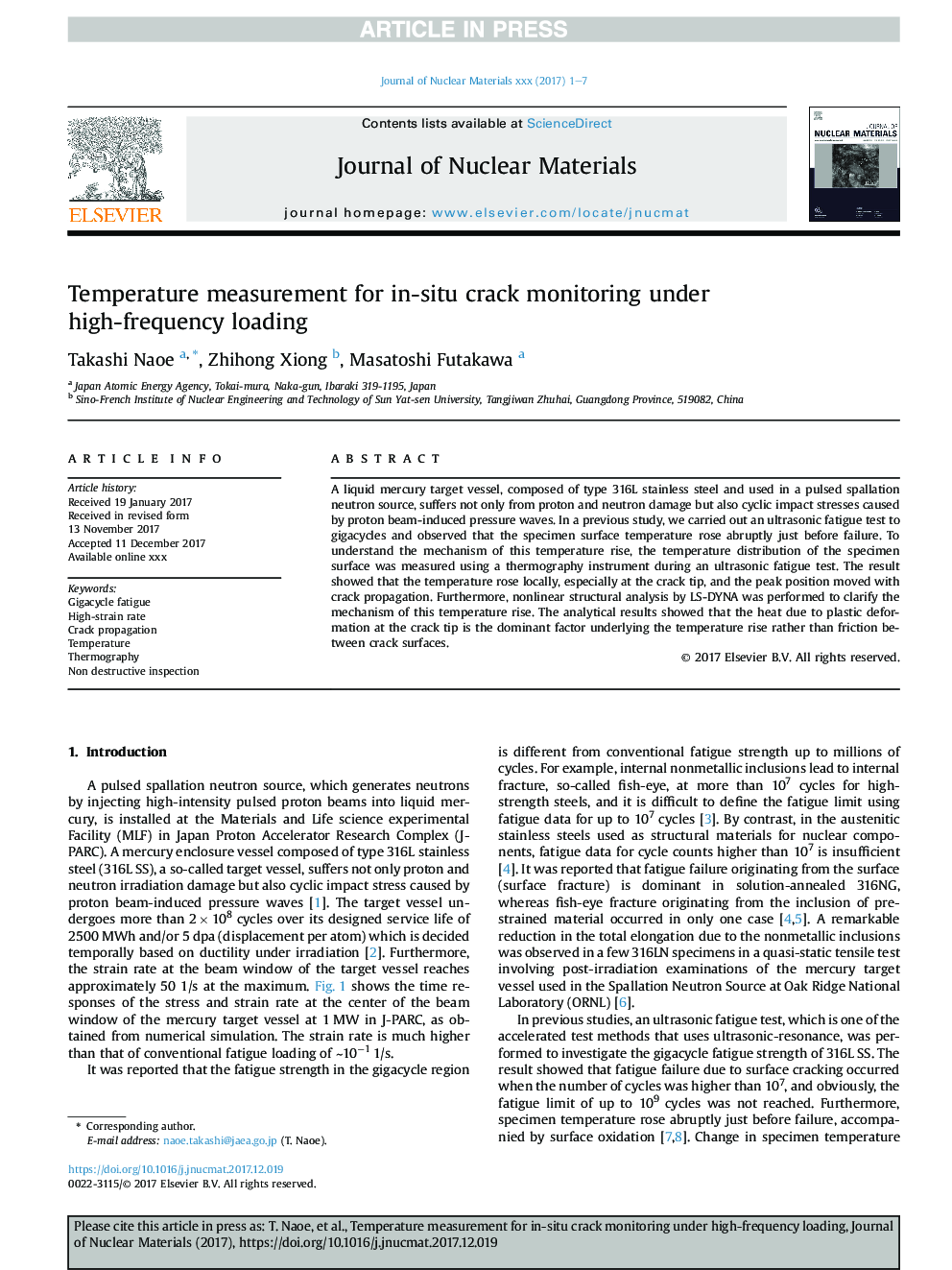| Article ID | Journal | Published Year | Pages | File Type |
|---|---|---|---|---|
| 7963107 | Journal of Nuclear Materials | 2018 | 7 Pages |
Abstract
A liquid mercury target vessel, composed of type 316L stainless steel and used in a pulsed spallation neutron source, suffers not only from proton and neutron damage but also cyclic impact stresses caused by proton beam-induced pressure waves. In a previous study, we carried out an ultrasonic fatigue test to gigacycles and observed that the specimen surface temperature rose abruptly just before failure. To understand the mechanism of this temperature rise, the temperature distribution of the specimen surface was measured using a thermography instrument during an ultrasonic fatigue test. The result showed that the temperature rose locally, especially at the crack tip, and the peak position moved with crack propagation. Furthermore, nonlinear structural analysis by LS-DYNA was performed to clarify the mechanism of this temperature rise. The analytical results showed that the heat due to plastic deformation at the crack tip is the dominant factor underlying the temperature rise rather than friction between crack surfaces.
Related Topics
Physical Sciences and Engineering
Energy
Nuclear Energy and Engineering
Authors
Takashi Naoe, Zhihong Xiong, Masatoshi Futakawa,
